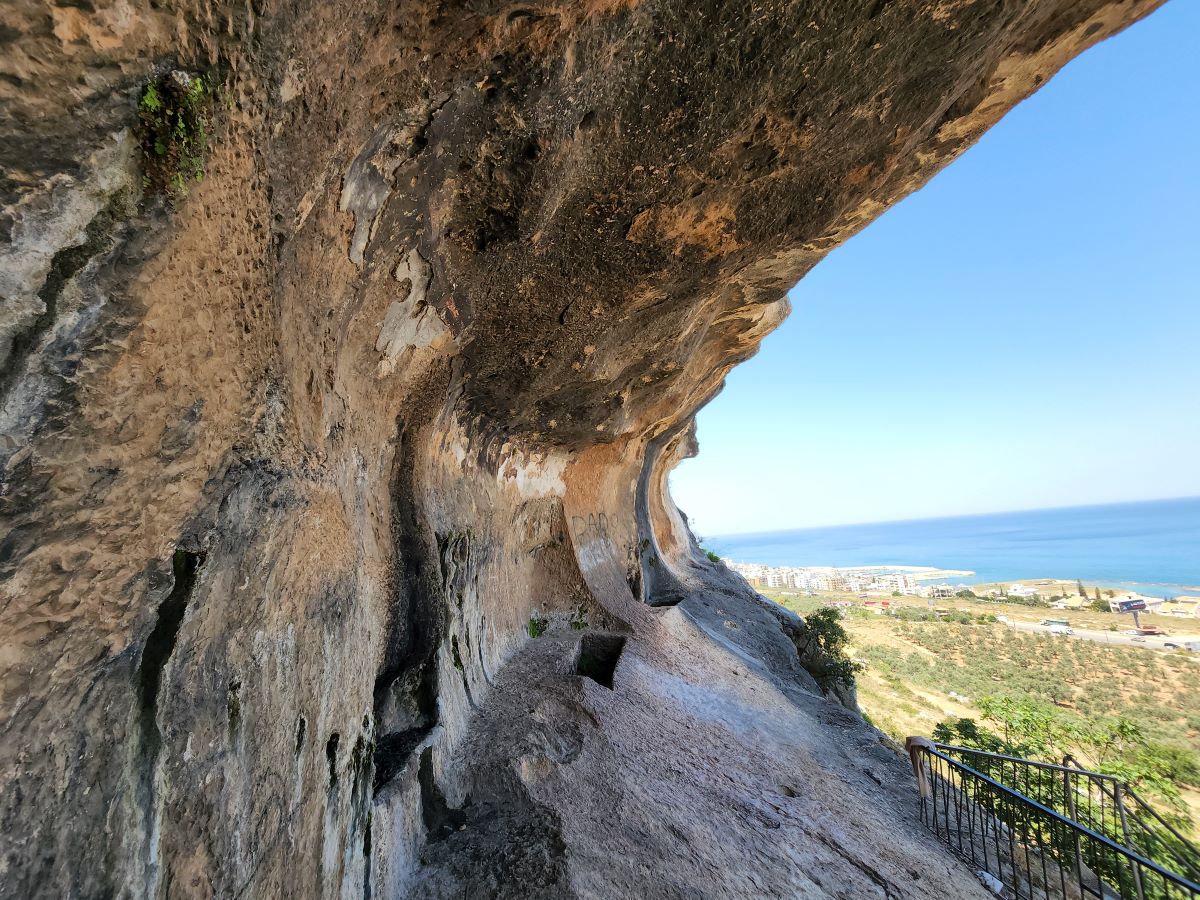Qalamun village features a rock shelter locally known as the “Marina Grotto” or “Saint Marina Cave”.
The site is accessible for the public through a 5 minutes walk from an internal road that links the coast to Deddeh village (check the location on the map at the bottom of the article). The floor of the cave is slippery so mind your safety.
Historical background
The shelter is part of a series of shrines and places of worship interconnected through a network of trails that linked the site to Anfeh, Deddeh, Tripoli and other villages and towns in the hinterland.
Archaeological findings revealed that the site was used for different types of activities: practice of religious rituals, lime manufacturing, food gathering and processing, and potentially pottery production or trade which mostly dated between the 11th and the 15th century AD.
Dedication
The shelter is dedicated to a local saint – Saint Marina – who is believed to have been born in Qalamun and travelled to the Qannubin monastery to become a monk where he/she loved until her/his death. According to local tales, Saint Marina was considered by the locals as a patron/healer for women who were unable to breastfeed or bare children.
Site
The rock shelter is composed of two cavities; a large and a smaller one.
The large cavity, accessible through steel stairs, was once covered in paintings dating between the 12th and the 13th century AD depicting Saint Marina, Saint Demetrios, the Deesis, a dendrite saint or a biblical scene, and the Annunciation. Unfortunatly, severe damage took its part on the paintings due to both natural and human factors.
The presence of postholes, as well as beam-holes carved into the cavity’s walls and floor suggest a once-erected extension of the shelter, probably to cover and protect the paintings. The cavity also features a wall basin, as well as a rectangular pit that may have been a tomb.
The small cavity, located on the south and connected through small steps to the large one, is deprived of paintings; scholars are still not sure if it ever had one.
Around the shelter, an abundance of water tunnels, channels and cisterns can be observed. The site also had at some point some dwellings and pits to produce lime.
Karim Sokhn
Tour Operator & Tour Guide
References
Baal Vol 18, 2018






